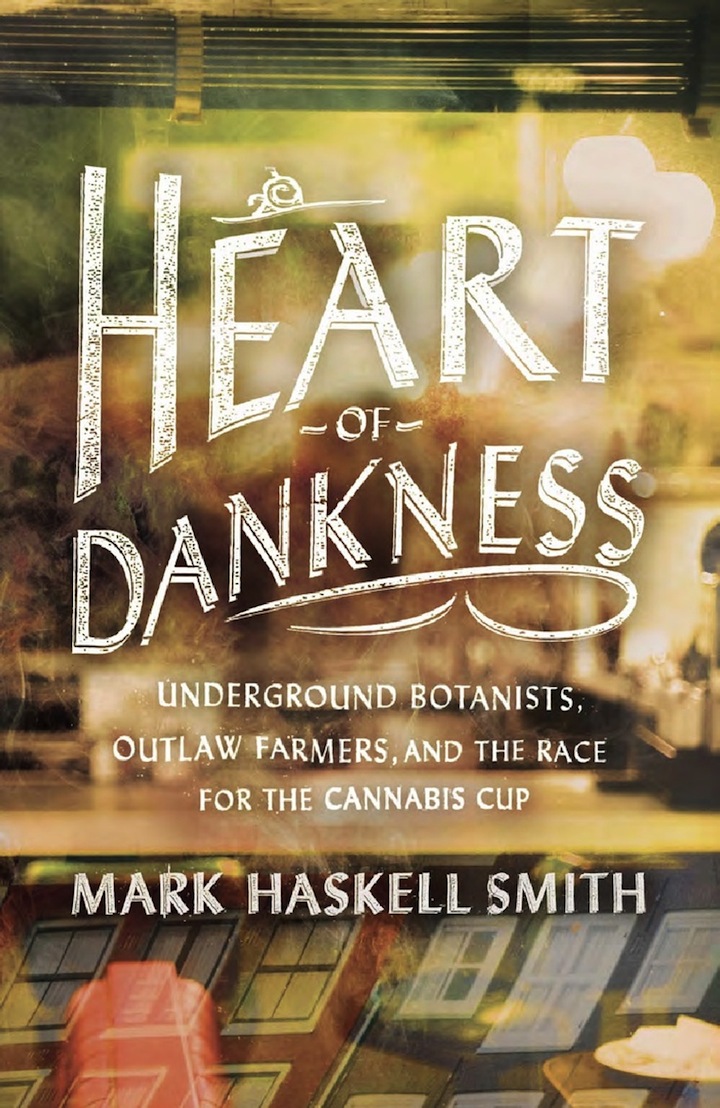
Mark Haskell Smith’s Heart of Dankness
Heart of Dankness is a travelogue only by necessity; if Mark Haskell Smith had his way, he wouldn’t need to leave his home state of California to experience the specialised highs promised by Amsterdam’s competitive Cannabis Cup. Nor would he want you to have to leave your home town (or even your couch) for a similar experience. Since marijuana possession remains illegal throughout most of the world, however, Haskell Smith needs to travel to get his toke on. This is just as well, because his quixotic search for ‘dankness’ becomes a fascinating travelogue populated by a large cast of larger-than-life eccentrics united by their love of good dope.
The ‘dankness’ Haskell Smith is chasing is the certain ineffable quality that makes an excellent high … well, an excellent high. His quest for dankness begins next to a canal in Amsterdam, where, having sampled a hybrid strain of marijuana named John Sinclair, he experiences a visual hallucination of himself thinking (in Comic Sans, no less) “This shit is dank!” He has no idea what ‘dank’ could mean in this context, and his Webster’s isn’t much help (dank, it claims, has been “largely superseded by damp”). The John Sinclair he smoked didn’t give a strong ‘couch-lock’ high, but rather a clear, lucid high. His journey becomes one of trying to understand what makes good pot good, which necessitates travelling not only to Amsterdam to meet specialised pot-breeders but also through the dope-growing highlands of California and to a medical marijuana conference in Toronto. Oh, and sampling various strains of the green stuff. A lot of them.
As you may have gathered, Heart of Dankness is not a book aimed at conservative or anti-drugs readers. Haskell Smith is a self-confessed hedonist, one who has no compunction in letting the reader know about the various drugs he has sampled. (Of his early experiences with drugs, he writes, “Over the next ten years I took many drugs, many times, developing a real fondness for psychedelic mushrooms and, later, sauvignon blanc.”) His attitude is that illegal drugs do not fundamentally differ from legal ones such as alcohol, caffeine or nicotine, and he is an unashamed proponent of marijuana legalisation. As if to bolster his case, some of the best writing in the book is concerned with the act of getting high. He is particularly good at describing the differences between strains: a indica strain named Lavender is “spicy and subtle and actually tasted a little bit like some lavender-infused ice-cream I once tried”; a sativa named Zeta gives off “a blast of fresh sage and lemon … [it] made me want to eat roast chicken.” Heart of Dankness should come with a warning label: it will make even the most pot-averse reader (this one included) yearn to sample these exotic marijuana varietals.
Despite this hedonism, Heart of Dankness is not a lightweight book. It tackles some of the big issues regarding marijuana: the human toll of the ‘war on drugs’; the unusual legal situation in American states such as California (joined, since the book has been published, by Washington and Colorado) where state laws are ignored by federal prosecutors; and the complex organic chemistry that allows certain strains of marijuana to taste less like oregano and more like chocolate, lemon or tangerine. Throughout the book, Haskell Smith remains an affable guide with a deft prose style, which makes Heart of Dankness a must-read for anyone interested in marijuana tourism, drug laws or the bizarre world of cannabis competitions.
